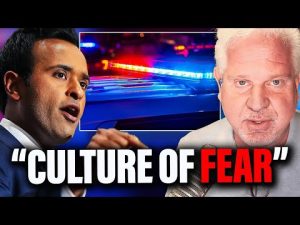**Cincinnati’s Crime Conundrum: A Governor’s Call to Action**
In the heart of Cincinnati, a stirring call for change is echoing through the streets and into the offices of city leaders. As the latest incident of urban violence has left many residents on edge and feeling unsafe, Vivek Ramaswamy, a Republican candidate for governor, is stepping up to address the concerns that have left the community reeling. With a blend of determination, common sense, and an urgent plea for unity, Ramaswamy is setting the stage for a much-needed conversation about public safety in Ohio’s cities.
Born and raised in Cincinnati, Ramaswamy brings a personal connection to his mission. Following a brutal assault on a local woman named Holly, he found it shocking that local officials had not reached out to her in the aftermath. This incident surfaced the alarming reality that, instead of solutions, fear has become a way of life for many of Cincinnati’s residents. Ramaswamy passionately emphasizes that no hardworking American should feel unsafe in their own city. With statistics showing a shocking one in 137 chance of becoming a victim of violent crime, the call for action has never been more urgent.
Addressing this pervasive culture of fear, Ramaswamy boldly states that it’s time for a collective uprising against violence. He identifies the broader issue at play here: the ongoing anti-police sentiment that has been prevalent across the country. He argues that rather than defunding those who serve and protect, Ohio needs to bolster its police force, enabling law enforcement officers to do their jobs without the threat of political backlash or legal repercussions. Ramaswamy believes that this straightforward approach isn’t just logical; it’s essential for restoring a sense of safety for all citizens, regardless of their political leanings or backgrounds.
In a world where everyone seems to have their own agenda, Ramaswamy is committed to fostering open dialogue. His plan includes a town hall meeting where he invites everyone—supporters and dissenters alike—to engage in meaningful discussion about tackling crime. This approach not only symbolizes his willingness to lead by example but reassures the public that their voices will be heard, and their fears taken seriously. By creating a space for honest debates, Ramaswamy aims to address the real concerns on everyone’s mind while transcending political divides.
Critics argue that past administrations have failed to confront the realities of violence and crime in urban areas, instead brushing them under the rug. Ramaswamy asserts that it’s time for a new generation of leadership—one that prioritizes safety and embraces common sense solutions over political posturing. It’s not about right versus left; it’s about ensuring that every citizen can enjoy their cities without the worry of violence casting a shadow over everyday life. Ramaswamy envisions Ohio leading the charge toward a safer, more unified future, setting an example for other states to follow.
While challenges lie ahead, Ramaswamy remains unwavering in his commitment to safety and community well-being in Cincinnati. His dynamic approach, rooted in understanding and a genuine desire for improvement, offers a glimmer of hope for a city that refuses to be defined by fear. As the people of Ohio look to the future, they have the chance to reshape the narrative—a narrative where safety, community, and dialogue prevail over division and discord. After all, no American should ever feel like they are a prisoner in their own city; it’s time to reclaim freedom and safety for all.







